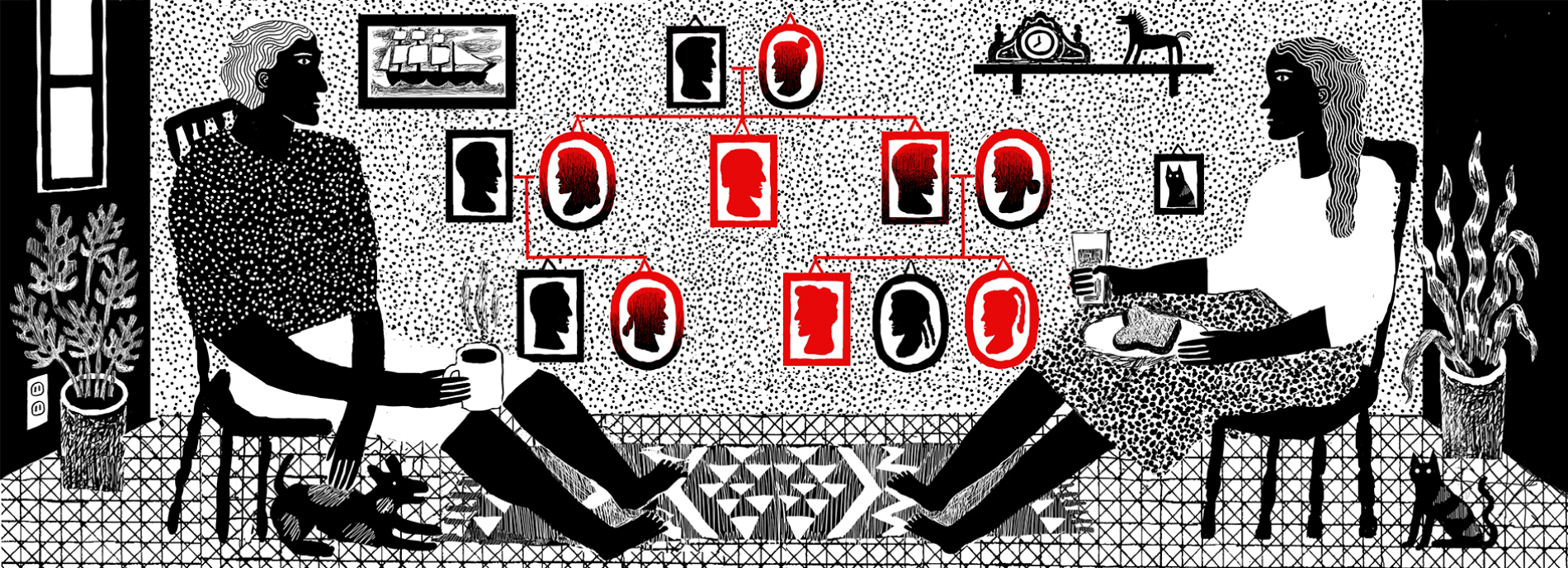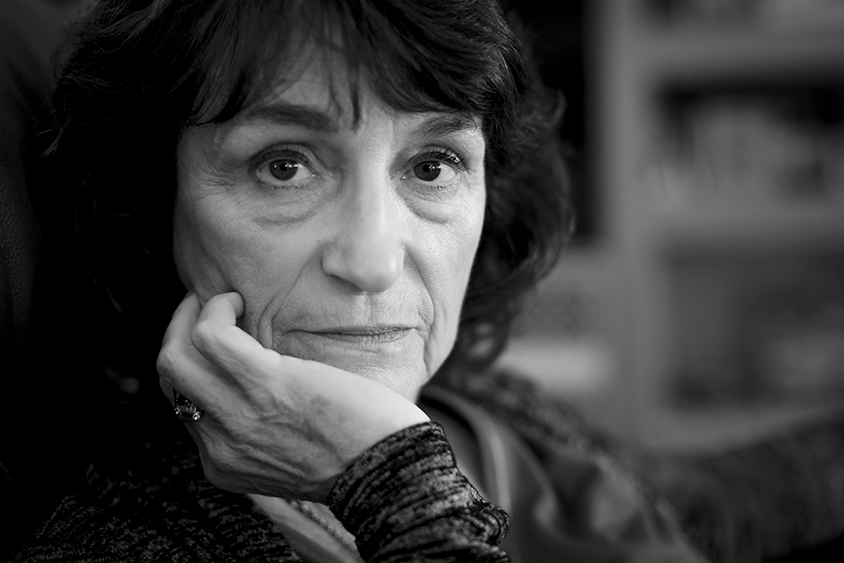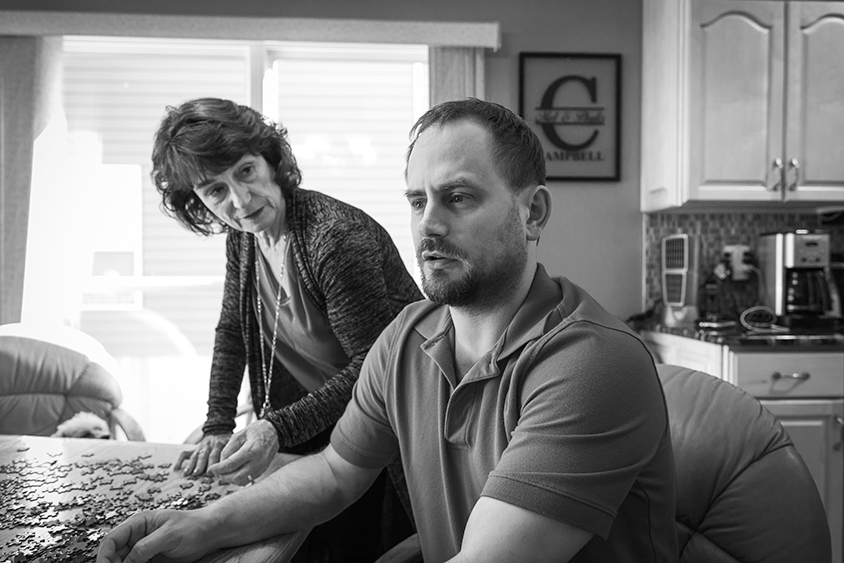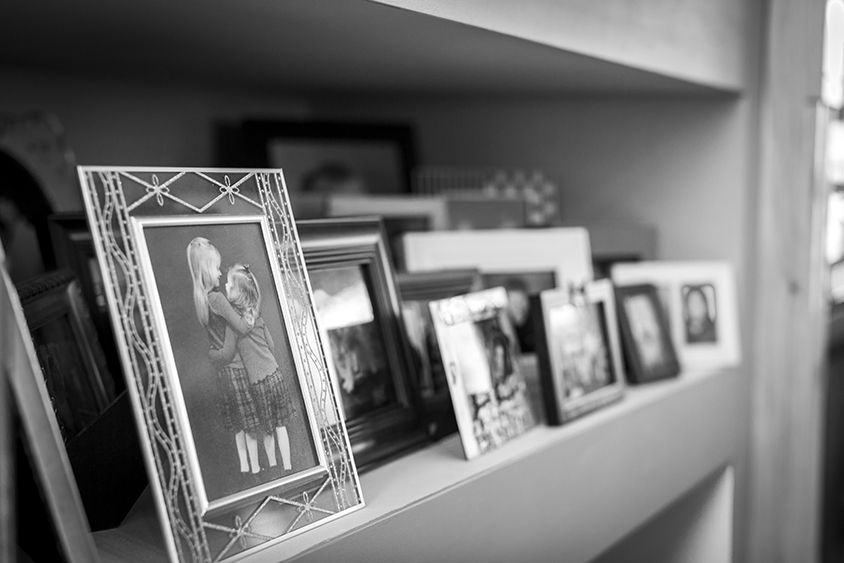
What grandmothers can teach scientists about autism’s inheritance
Women who have raised a child with autism may be well-positioned to spot subtle signs of the condition in their grandchildren. A new study puts their powers to good use.
P
hylis Campbell was surprised when her son Gregory was diagnosed with autism just before his 16th birthday in 1991. As far as she knew, the condition didn’t run in her family. But as her son grew older, all sorts of small characteristics in her relatives began to take on a whole new significance.For instance, Campbell recalled that, like Gregory, his father had intensely disliked clothes with bulky seams or itchy tags, and preferred soft fabrics. In fact, Gregory’s father had said he felt responsible for the odd preferences his son had inherited from him. He had severe depression, as did his mother, and died in 2003.
Campbell knows less about the quirks of biological relatives on her side of the family because she grew up in foster care. She has little contact with her biological parents and siblings. However, in the past decade she has learned that one of her biological sisters has a grandson diagnosed with autism.
When her daughter, Alisa, began having children, Campbell kept a watchful eye on them, searching for signs of autism. She became anxious at the slightest hint that they might miss a typical developmental milestone. When her granddaughter, Talia, was a toddler and started to walk without having first crawled, Campbell bought a battery-operated Minnie Mouse doll and crawled along the floor with it to encourage Talia to do the same. “I put her through the motions of crawling because I did not want that stage to be skipped,” she says.
Talia is now 15, and her brother Jeremy is 12. Neither has autism, but Campbell says she sees hints of it in both. Jeremy, for example, has grown anxious in the past year: He pulls out his eyelashes and has a bald spot on his head from nervously pulling out patches of his hair. Talia strives for perfection in school and is easily upset if her test scores or athletic performance are less than flawless. She also dislikes changes to her routine and needs coaxing to meet new people. “If she’s going into a new situation or a new sports group, she wants a family member to go with her because she hesitates to go out onto the field with kids she doesn’t know,” Campbell says.
For years, Campbell wondered if these traits were related somehow to her son’s condition, and worried that subsequent generations of her family would also be at risk. Then, in August, she heard child psychiatrist John Constantino speak at a workshop near her home in St. Louis, Missouri. Constantino talked about a project in which he and his colleagues would collect women’s keen observations of their children and grandchildren. The goal, according to the flyer, was ultimately to understand the risk of autism across generations — essentially what Campbell had spent dozens of hours worrying about. She immediately signed up.

Campbell is one of five grandmothers Constantino’s team has recruited so far. Like her, the other women have at least one child with autism. They too have other children who do not have an autism diagnosis, and grandchildren through those children. Because these women have had children with autism, they are primed to see signs of it in the next generation. “They’re very invested in their grandchildren — they’re watching their grandchildren, interacting with them, and they’re good raters of their grandchildren’s behavior,” says Constantino, professor of psychiatry and pediatrics at Washington University in St. Louis. “Ignorance is no match for an army of grandmas.”
Campbell’s family is a particularly good fit for this study, because the work focuses on the unaffected sisters of men with autism — like Campbell’s daughter, Alisa. Studies suggest that the sisters of people with autism tend to have more autism traits than do people in the general population. They are also up to four times more likely than average to have a history of language delay that they later outgrow. Language difficulties often accompany autism, and may be a sign that the sisters carry genetic risk factors for the condition. Scientists are particularly interested in sisters because they may pass these risk factors on to their children.
Studies like these challenge conventional ways of thinking about autism. An autism diagnosis can sound categorical: either you have the condition or you don’t. But increasingly, there is acceptance among both scientists and the general public that autism-like characteristics — adhering strictly to routines, for example, or an obsessive interest in certain topics — exist in everyone. The more of these traits someone has, the closer she is to an autism diagnosis. Some traits might even influence whom she chooses as a partner — and determine the fate of future generations.
Genetic roots:
T
he notion that autism runs in families is as old as the diagnosis itself. In the landmark 1943 paper that included the first formal descriptions of children with autism, child psychologist Leo Kanner noted that some parents showed milder versions of the same features he saw in their children. Kanner wrote that these parents seemed to be overly focused on details and uninterested in social interactions. His observations suggested that the same genetic factors that led to the children’s autism may have also been responsible for the unusual features of the parents.In the late 1970s, Kanner’s hunch found confirmation in studies of twins, which eventually established autism as among the most heritable psychiatric conditions. If one twin has autism, an identical twin has up to a 94 percent chance of sharing the diagnosis.
Intrigued by these observations, psychiatrists in the 1990s conducted lengthy interviews of parents and siblings of people with autism, probing their personalities and behaviors. They found that at least 20 percent of these relatives tend to be resistant to change, have problems with language and speech, and are hypersensitive to criticism, anxious and aloof. These features are so similar to the tendencies of many people with autism that researchers collectively labeled them the broad autism phenotype, or BAP. These psychiatrists ultimately developed various questionnaires and rating scales for probing BAP during family interviews.
But studying BAP has turned out to be tricky, in part because the field lacks evidence on exactly how to measure it or distinguish it from features that run in families with other psychiatric conditions, such as schizophrenia. “It’s very slippery in terms when you try to pin it down,” says Michael Rutter, professor of developmental psychopathology in the Social Genetic and Developmental Psychiatry Department at King’s College London. “There are various measures that have been put forward, but I don’t think any of them are entirely satisfactory.” (Rutter led the landmark 1977 study of twins with autism that established the condition’s heritability.)
Since those initial attempts to characterize BAP, some researchers have devised efficient tests to quantify aspects of it. For example, in 2000, Constantino developed the Social Responsiveness Scale (SRS), a 20-minute questionnaire designed to measure autism traits in yourself or someone else. The scale primarily gauges social and communication skills, such as how savvy a person is at reading facial expressions and how comfortable he is in social situations. It also looks for rigid behaviors and restricted interests.
Constantino first had parents and teachers use the scale to rate 158 children with confirmed psychiatric issues, including 19 with autism, and 287 children from the general population. The test scores fell on a continuum in both groups, some of which overlapped, suggesting that autism traits can be found to varying degrees across the population. In 2001, a group led by Simon Baron-Cohen at the University of Cambridge in the United Kingdom used the Autism Spectrum Quotient, a different measure of autism traits, and observed a similar trend. These studies suggest that the line between having and not having an autism diagnosis is arbitrary. “All you have to do is just nudge the line to the left a little bit and dramatically increase prevalence,” Constantino says.
Constantino and others have since tested the siblings and parents of people with autism. These relatives tend to have more autism-like characteristics than average, especially those related to social and communication skills.
”"Ignorance is no match for an army of grandmas.” John Constantino
In the family:
J
aclyn Perry, a 20-year-old college student at the University of California, Los Angeles, has a brother with autism. Perry does not have an autism diagnosis, but she has struggled with anxiety and compulsive behaviors, including pulling out her eyebrows and eyelashes. She arranges the clothes in her closet so that each item hangs on an identical hanger, with the same amount of space between them. She has frequent panic attacks and used to obsessively check doors in her home to make sure they were locked.Perry dismisses her mother’s idea that these quirks simply stem from the stress of growing up with a brother who has special needs. Many of the relatives on her mother’s side of the family — Perry’s grandmother and great aunts — also have anxiety, she says. “We have a lot of hard times breathing and heart palpitations and trouble sleeping,” she says. “It’s probably genetics, because a lot of people in my family have it.”
These kinds of traits may seem like random quirks in a family, but Constantino and others are betting that the mutations that underlie them also contribute to autism. So far, many of the mutations that researchers have confidently linked to autism risk were discovered precisely because they aren’t inherited: They occur spontaneously. Everyone has these so-called de novo mutations, but in people with autism, they tend to damage certain genes more frequently and severely than they do in their parents or siblings. So scientists can compare the genomes of people who have autism with those of their relatives and spot the likely culprits. “It seems to be that in families that don’t have a family history of autism, there are more likely to be these non-inherited genetic mutations,” says Jennifer Gerdts, assistant professor of psychiatry and behavioral sciences at the University of Washington in Seattle.

Because these children with random mutations did not inherit their autism, their family members are likely to be truly ‘unaffected’ — meaning they are unlikely to have the traits that make up BAP. To confirm this impression, Gerdts is comparing these relatives with the those of people on the spectrum who have inherited mutations.
By comparison, pinning down heritable genetic variants — which are more likely candidates for BAP — has been difficult. Studying consanguineous families, in which the parents are cousins, has yielded some data. Looking at such families in the Middle East, some scientists have found children with autism who have two mutated copies of a gene, one from each parent, and identified autism risk genes.
The majority of the inherited risk for autism probably occurs via ‘common’ variants. Unlike rare de novo mutations, these variants occur in at least 1 percent of the population. Each variant may only contribute an incremental risk of autism, but inheriting a critical mass of the variants might push a person across the threshold for a diagnosis. And having less than this critical number of variants might result in BAP — enough for some quirks or behaviors to turn up, but not quite enough for a diagnosis.
So far, scientists have not been able to study anywhere near the numbers of people with autism they would need to confidently tie any particular common variant to autism. In March, a group at Harvard University reported that some common variants previously linked to autism are associated with poor social skills in children who don’t have an autism diagnosis. This finding supports the idea of a common genetic makeup for both autism and BAP. If this idea bears out, researchers may be able to learn more about autism by studying people without a diagnosis who show signs of BAP.
Because they tend to have a higher intelligence quotient and fewer secondary conditions, people without a diagnosis can be easier to study than those who do have one. This could address a persistent limitation in research. “Why only study the children who are meeting a clinical standard?” asks Angelica Ronald, reader in psychological sciences at Birkbeck, University of London. Including people with autism traits “will advance our understanding of the causes of autism faster than using the arbitrary cutoff that’s there for clinical purposes,” she says.
Expanding the study pool in this way would also allow researchers to study individual traits, such as social difficulties or restricted interests. For example, Joseph Piven has found that parents who have social difficulties have brain activity patterns that resemble those seen in people with autism. “When you don’t select out to study people who have the full syndrome of autism, like we have done forever, you basically get to study these things as they may appear independently,” says Piven, distinguished professor of psychiatry at the University of North Carolina at Chapel Hill.
Others are more circumspect, saying people who have only an autism-like trait are likely to be quite different, genetically, from those who have a diagnosis. People with autism may have distinct mutations that aren’t shared by their close relatives without autism, says Thomas Frazier, director of the Cleveland Clinic’s Center for Autism. In fact, he says, these mutations may be what draw the line between having a diagnosis and not.
”“Why only study the children who are meeting a clinical standard?” Angelica Ronald
Team grandma:
F
rom a family’s perspective, learning more about individual traits might help doctors predict how well a child with an autism-linked mutation will fare in the long run. For example, a 2015 study measured autism traits in 56 people who have deletions in a chromosomal region called 16p11.2. The researchers found that the parents of those who have the severest traits also have high levels of these traits. The result suggests that the parents’ traits influence the effect the deletion has in their children.There is also evidence that people who have autism traits tend to pair up more often than would be expected by chance. This ‘assortative mating’ pattern may partly explain why autism often runs in families: When two parents with these traits have children, the cumulative burden of mutations may increase the child’s risk of autism. Studying BAP may also help researchers understand why some individuals have autism when their siblings do not. Initially, Constantino and his colleagues began exploring this idea by analyzing data in the Interactive Autism Network, a registry of 10,000 families with autism. He and his colleagues identified 600 adult sisters of men with autism and contacted the mothers of these women.
So far, Constantino’s team has data for 12 grandchildren: seven boys and five girls. Two of the boys have an autism diagnosis, and four others are suspected of having the condition but haven’t yet been formally evaluated by a doctor. The sample size is still too small to make much of the results, but it is consistent with the theory that there’s an enhanced risk of autism in these children. The promising hint prompted the team to begin recruiting at least 300 grandmothers, including Phylis Campbell, from St. Louis and surrounding areas.

Campbell says participating in the study has helped her better understand her own family history. One of the items in the SRS asks about unusual sensory behaviors — such as sniffing your own hair. The question reminded Campbell of how Alisa used to pull her long hair up to her nose. When she shared this memory with her daughter, Alisa revealed that Talia often does the same thing.
“It’s kind of neat; the grandmother didn’t realize that fell into a category of weird sensory behaviors,” Constantino says. “A lot of families and grandparents don’t recognize that that’s a risk factor.”
Campbell wonders whether this quirk is related somehow to the touch sensitivity her son and ex-husband shared. For now, she is committed to looking for signs of autism in her grandchildren — and in any children they have. “If I’m around — and I hope I am,” she says, “I’m going to watch them, too.”
Syndication
This article was republished in The Atlantic.
Recommended reading

Expediting clinical trials for profound autism: Q&A with Matthew State

Too much or too little brain synchrony may underlie autism subtypes
Explore more from The Transmitter

Mitochondrial ‘landscape’ shifts across human brain

